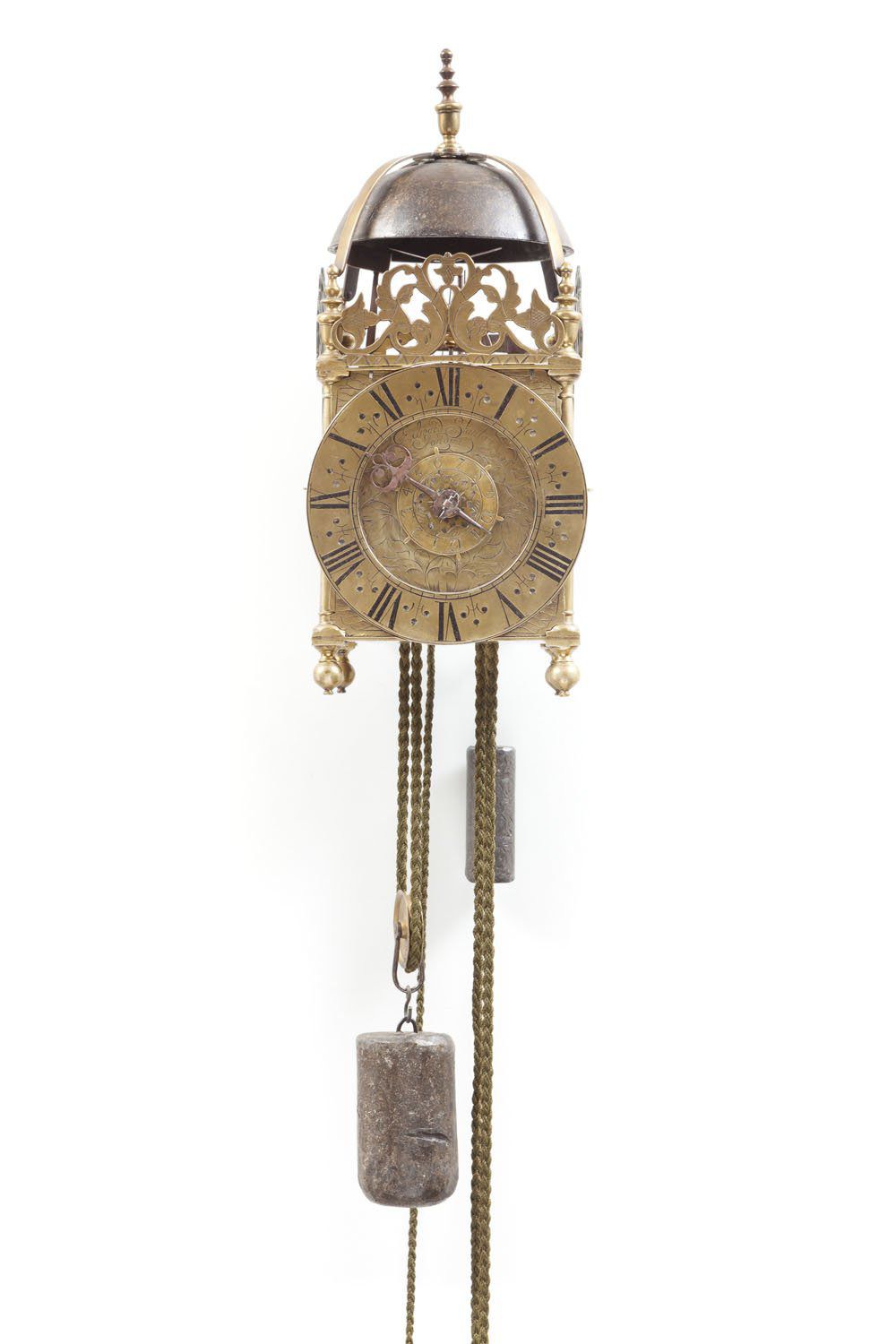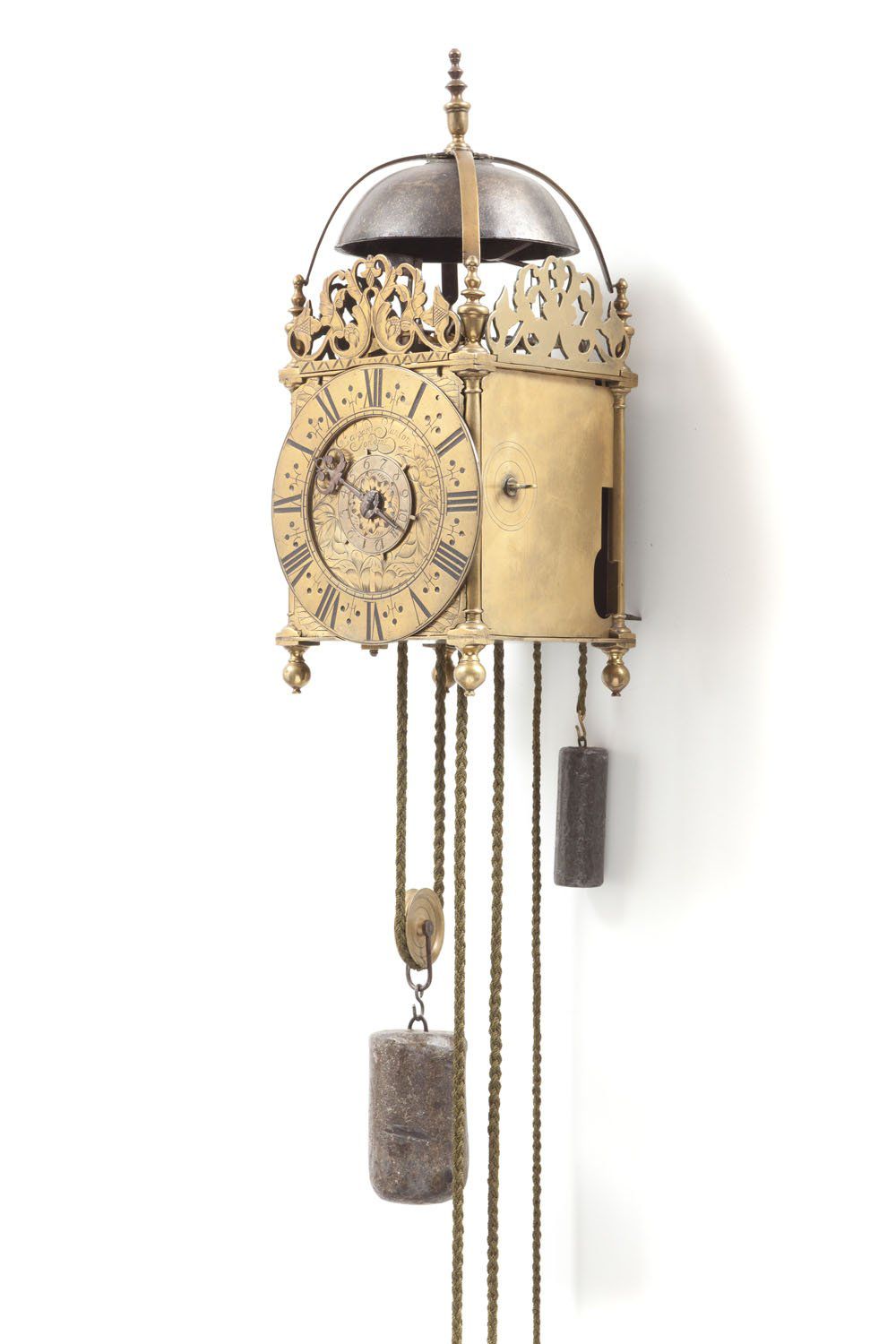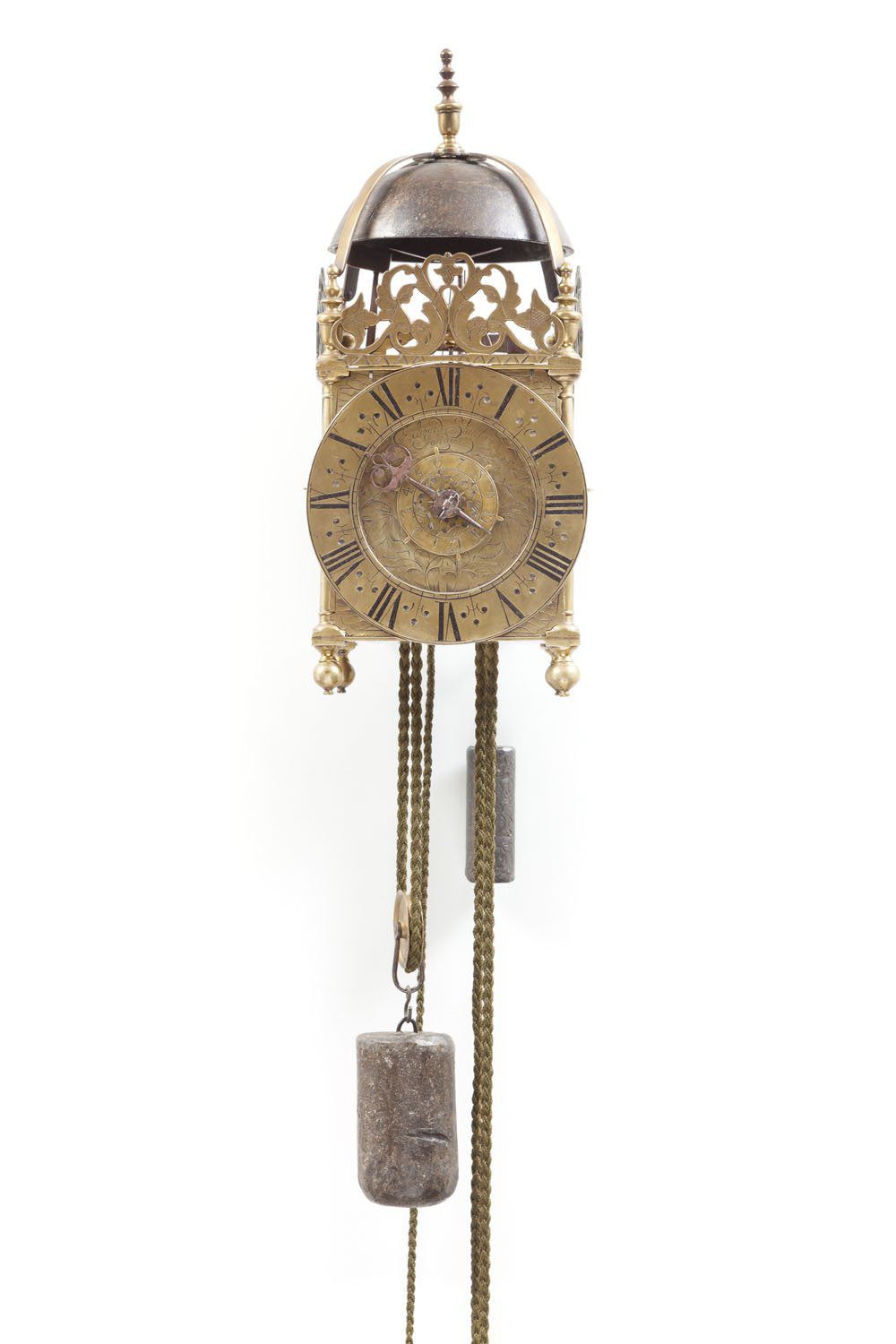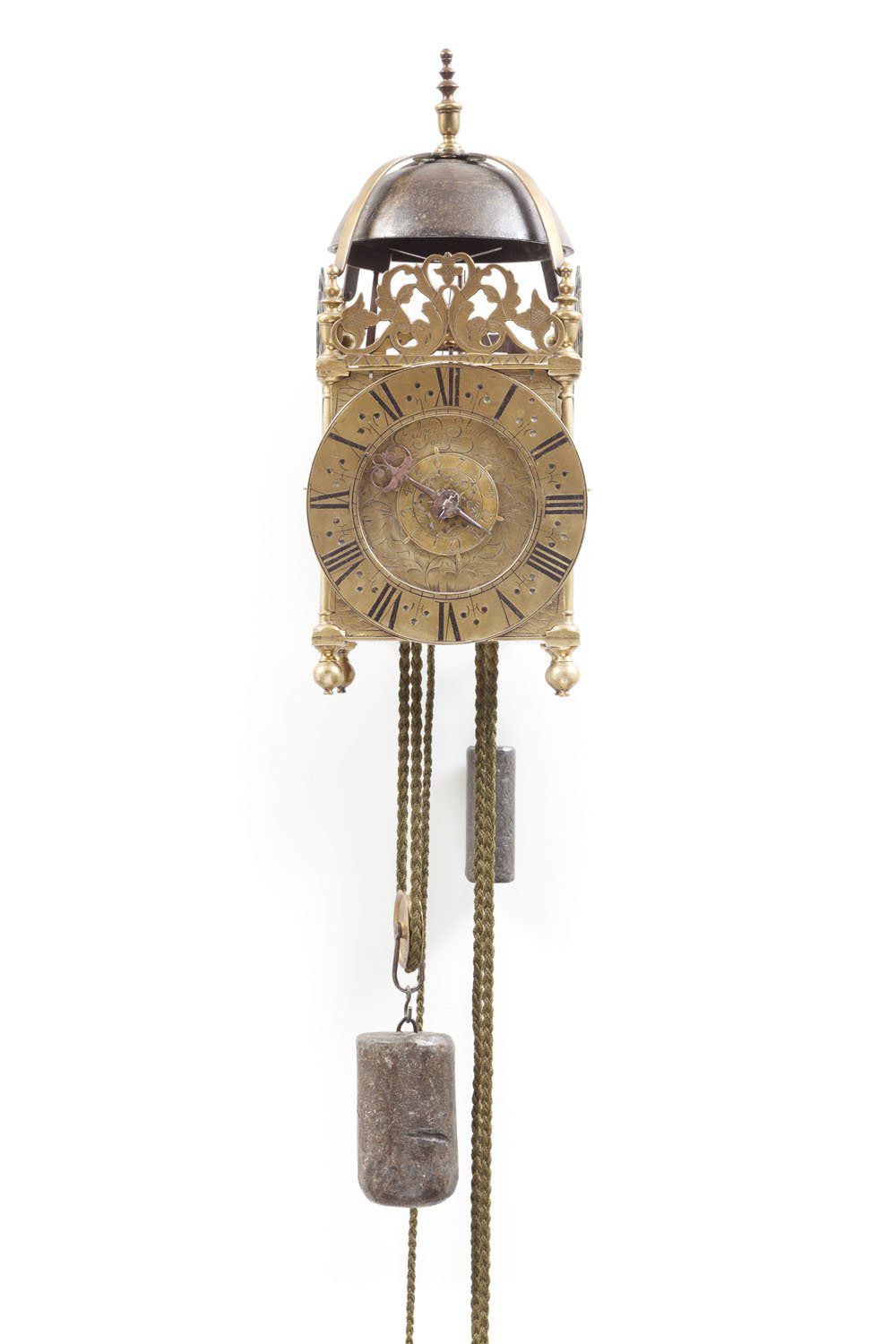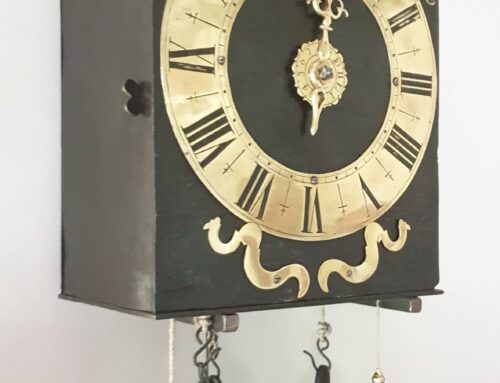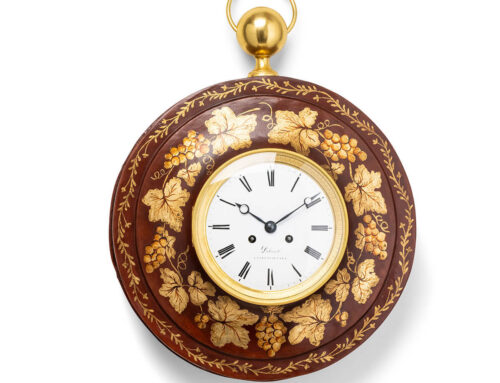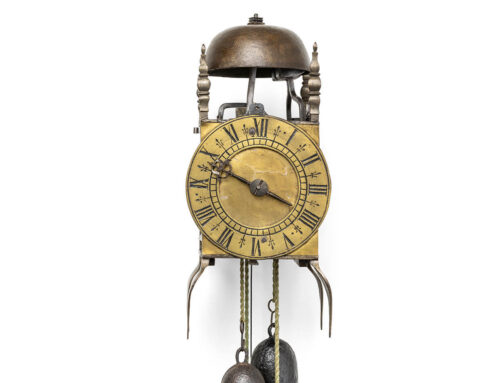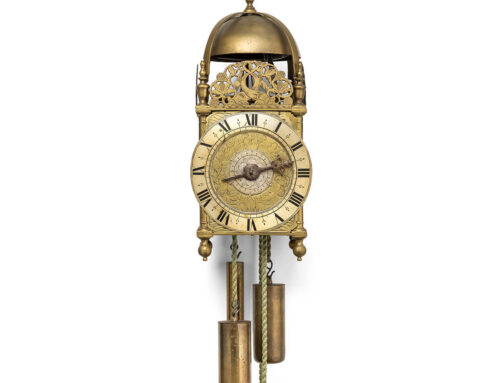English Lantern clock
Description
English Lantern clock
Made by Edward Stanton in London
An English striking wall clock with alarm, c. 1690.
Case
The brass case has a classical lantern clock shape with a prominent dial, two brass doors to the sides, an iron backplate with an external alarm and two spikes. The hoop is attached to the top plate, the whole being surmounted by a bell in a bell strap surrounded by pierced frets. There are four brass pillars on the corners with turned finials at the top and drop finials at the bottom. The bell is surmounted by a
similar finial. The front fret is engraved with flora land leaf motifs.
Dial
The brass dial is also engraved with floral and leaf motifs. Above the middle is the signature:
Edward Stanton
Londini
The time is indicated by a single hand on a Roman chapter ring with half-hour fleur-de- lys and quarter hour divisions. Behind the hand is an Arabic alarm disc, the alarm time being indicated by the tail of the hour hand.
Movement
The weight-driven, day-going movement has going, striking and alarm trains. The going train has its original verge escapement and a short pendulum with a pear-shaped bob, which unusually oscillates inside the case (usually behind the case). The count-wheel striking indicates the hours on the bell. In addition, the clock has alarm with a separate shaped two-sided hammer.
The maker
Edward Stanton was born about 1641. He was apprenticed in December 1655 through the Clockmakers’ Company to Francis Bowen of Leadenhall Street, London, who was William Bowyer’s apprentice, the latter being a lantern clockmaker of renown, also in Leadenhall Street. Between 1658 and 1662 Edward
Stanton, at this time still an apprentice, was transferred to another master, probably on the death of Francis Bowen, namely to Nathaniel Allen (d.1662), who had only recently (about 1658) become a member of the Clockmakers’ Company. Edward Stanton should have finished his term of apprenticeship by December 1662 and he was freed from his apprenticeship through the Company at the next meeting in January 1663. He too worked in Leadenhall Street, again perhaps in those same premises. Bowyer, Bowen, Allen and Staunton clearly liked the location and stayed with it. It proved to be a wise choice, as in 1666 the Great Fire of London stopped just short of Leadenhall Street! Stanton worked in London, probably at these same premises, for over half a century. Those who trained him, and the man who trained them, made nothing but lantern clocks. But Stanton also made longcase and bracket clocks as well as lantern clocks. All the lantern clocks of his that are known are with a short verge pendulum, most later converted to anchor escapement and long pendulum to improve timekeeping. They are variously signed ‘Edward Stanton in Leaden Hall Streete, Londini’, ‘Edward Stanton Londini’, or ‘Edward Stanton London’. A lantern clock by him is pictured in Clocks Magazine June 2001 p.36. Naturally
there is some variation in the design and style of his clocks over his long working period. And yet many of his lantern clocks look very similar to each other, which is perhaps not surprising if he engraved his own dials. We seldom know when a clockmaker was also an engraver, as many would have sent their work out to specialised engravers. In Stanton’s case we can guess that he may well have done his own engraving, as we know he was also an engraver. In the Clockmakers’ Company Stanton was made an Assistant from 1682, a Warden from 1693, and became Master of the Company aged 56 in 1697, a year during which John Ebsworth, another prolific maker of lantern clocks, was also Master. Two years later, in 1699, Edward Stanton was named as one of the overseers to John Ebsworth’s will, the latter dying in that year aged about 56. Stanton was 58. An ‘overseer’ was appointed to ensure the deceased’s wishes were carried out and was usually a trusted friend or relative. We know of no business connection between them, though they would have shared the same responsibilities in the Company about the same time. In March 1702 Stanton had an illness, its nature not explained, though he continued to attend Company meetings after that. Then, quite abruptly, he ceased to attend after 1715, when he probably died. His age then would have been about 74.
Literature
Brian Loomes, Lantern Clocks, Ashbourne, 2008, pp.501-02; Clocks Magazine,
January, 2009.

